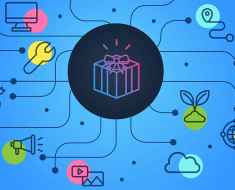- Americans have flocked to freelance and gig work in recent years.
- The adoption of generative AI could cause the gig economy to grow further.
- A growing gig economy would mean fewer benefits — but greater flexibility — for workers.
Americans are flocking to the gig economy for extra income and job flexibility, but the AI boom could make independent jobs a necessity — rather than a choice.
That’s because three of AI’s potential impacts — making jobs easier, more competitive, and in some cases, obsolete — could each make gig work more prevalent.
A record 63 million Americans, 38% of the workforce, performed freelance — or gig work — in 2023, according to an Upwork survey of 3,000 US adults conducted in the fall. The most popular gig jobs weren’t what you might imagine, like ride-hailing or delivery drivers, but workers who provided knowledge services such as computer programming, marketing, or IT — this group accounted for 47% of all independent workers.
Bosses could opt for fewer full-time workers in the age of AI
AI tools like ChatGPT are expected to boost some workers’ productivity, in part by automating a portion of their work tasks. A McKinsey study found that up to 30% of hours worked in the US could be automated by 2030.
When a worker’s job tasks require fewer hours than they used to, their boss might simply give them additional work or responsibilities. But there’s a more negative possibility, Alexandrea Ravenelle, assistant professor of sociology at the University of North Carolina, who specializes in the gig economy, told Business Insider. Their boss could decide they’re no longer providing enough value to warrant a full-time salary and benefits.
“If a worker has realized that they can replace some of their efforts with AI, there’s a good chance that their boss has already picked up on that too,” she said. “And if part of a worker’s job can be filled by AI, why would an employer pay someone for a full day?”
There are plenty of work tasks AI can’t do. But if it can do enough, Ravenelle said, more companies might decide to use gig workers —who are oftentimes less expensive — to fill in the gaps.
“AI can diagnose a patient, but we still need an actual human to do the exam and enter the data,” she said as one example. “Or AI can drive a truck, but we still need humans — for now — to load the truck.”
Ravenelle said this dynamic could play out in many professions, including lawyers, writers, public relations, and marketing.
The adoption of AI tools could make it easier for companies to find gig workers
If more companies look for gig workers to replace some of their full-time employees, there could be plenty to choose from. That’s because AI tools are helping people become proficient at a variety of work tasks — potentially boosting the labor supply for many professions.
If companies can trust AI-assisted independent workers to get the job done, they might turn to them more, Carl Benedikt Frey, an Oxford economist who studies AI, told Business Insider.
“More complex tasks, like market research, are now much easier to do with the help of generative AI,” he said. “And so there is a lot of cheap labor around the world that companies might tap into rather than hiring people in-house.”
AI job replacement could push more Americans into the gig economy
In addition to making jobs easier and more competitive, AI could eliminate some jobs.
When full-time jobs are eliminated, some impacted workers might seek employment in the gig economy to make ends meet — boosting the number of total gig workers. A 2018 study found that for every 1% uptick in unemployment in a given US county, there was an average increase of 22% in the number of residents actively working on gig platforms.
But AI could eliminate some gig jobs as well, Frey said, citing copywriting and translation work as two possibilities. He said this is among the reasons it remains an open question whether AI will exacerbate or reverse gig work’s recent growth.
If certain gig workers are forced to find other work, some might pursue traditional employment. But others might just look for new jobs in the gig economy.
“I don’t see gig work disappearing,” Ravanelle said. “I see it continuing to grow, and I think that we are going to need to really rethink our strategy as a society in terms of ensuring that workers have economic stability and then have access to benefits if their only income is coming from 1099 work.”
If a world with more gig jobs means workers receive lower pay and fewer benefits, many workers could be worse off. But if gig work’s positive attributes — like flexibility — provide opportunities for workers of all ages to boost their incomes, then it’s not all bad news, Kweilin Ellingrud, a senior partner at McKinsey who has researched generative AI and the future of work, told Business Insider.
“Figuring out how to create more flexible work for a broader set of people, including an aging workforce, could be a real boon to our productivity, to our economy, to businesses,” she said. “It doesn’t only have to be a negative.”
Are you a worker whose job has been impacted by AI, for better or for worse? If so, reach out to this reporter at [email protected].
NOW WATCH: Popular Videos from Insider Inc.
Loading…




